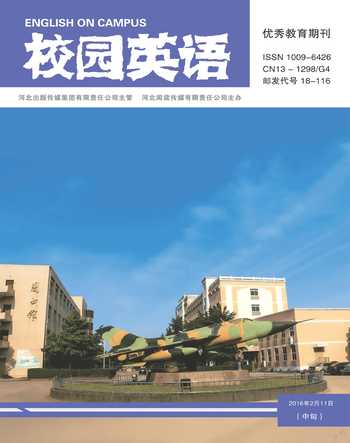Analysis of Chinese Cuisine Names Translation From the Perspective of Nida’s Functional Equivalence Theory
陈鹏
【Abstract】 This paper is based on famous American translation theorist Eugene Nidas Functional Equivalence Theory, aiming to analyze the necessity of Functional Equivalence Theory in the Chinese cuisine names translation and propose some translation methods.
【Key words】Chinese cuisine names translation; Functional Equivalence Theory
Nowadays, cultural communication between different countries becomes more and more frequent, and Chinese cuisine plays an increasing vital role in the progress of generalizing Chinese culture. However, many Chinese cuisine translations which contain some sort of wrong translation are disappointing. Functional equivalence theory has applicable and effective translation strategy, so he author thinks that this theory can be applied in Chinese cuisine names translation.
Ⅰ.Nidas Functional Equivalence Theory and Chinese cuisine names translation
1.1 Outlook of Nidas Functional Equivalence Theory
Proposed by America famous theorist and linguist Eugene A. Nida, the Functional equivalence Theory has revealed a great influence to many translator. He points out “translating consists in reproducing in the receptor language the closest natural equivalence of the source language message, first in terms of meaning and secondly in terms of style ”
1.2 Current Chinese cuisine names translation
We all know that successful Chinese cuisine names translation plays a quite vital role in the worlds cultural communication. However, many problems exist in current Chinese cuisine names translation. For example:“驴打滚” is a kind of traditional old Peking dessert made from glutinous rice flour. In the last making process, it is covered with yellow bean flour, which makes it looks like a rolling donkey stained with yellow soil. So it should be translated as “glutinous rice rolls with sweet bean flour”, but in some menus it is translated as a ridiculous name——“rolling donkey”.
Ⅱ.Methods of translating Chinese cuisine names under Functional Equivalence
According to the characteristics of Chinese cuisine names and the analysis of problems existing in the English translation, several translation methods for Chinese cuisine names will be suggested as follows.
2.1 Literal translation
Nida said: “If literal translation can realize the equivalence between the meaning and its associative meaning, there is no need to adjust the translation in form of sentences.” Plain speaking, literal translation can create translation in the style of equivalence function. Here are some examples:
“西芹百合” is translated as “celery with lily seeds”; “八宝饭” is translated as “ eight treasure rice pudding”
2.2 Free translation
To directly translate those names sometimes may make foreigners confusing. Free translation puts emphasis on meaning rather than words, so it can be closer to its target language thinking and realize the functional equivalence.
For instance, in “红烧狮子头”, “狮子头” is not referring to the real lions head but a metaphor to pork balls; in the “翡翠虾仁”, “翡翠” is not emerald but referring the green vegetables.
2.3 Transliteration
Frankly speaking, cuisine transliteration makes a great success in practical life, especially English to Chinese, such as “sandwich” is “肯德基” and “ pizza” is “披萨” Since words like this kind has widely acknowledged by Chinese, Chinese cuisine likes “jiaozi”, “mapo tofu” also can be accepted by foreigners.
The English translation of Chinese cuisine names is a progress with unceasing practices and searchings. If translators can insist these basic translation methods above, high quality translation will still unceasingly appear and make contributions to the worlds communication.
Ⅲ.Conclusion
Translation is a complicated knowledge of cross-cultural communication, involving linguistic transference and cultural transference. The purpose of this paper is to arouse translators equivalence awareness and improve the translation quality of Chinese cuisine names. The author hopes that further studies can be undertaken from this perspective and more effective translation methods can be used to produce more and more excellent Chinese cuisine names translation.
References:
[1]Nida,Eugene A.Language,Culture and Translating.Shanghai:Shanghai Foreign Language Education Press,1993.
[2]Nida,Eugene A.and Charles R,Taber.The Theory and Practice of Translation.Leiden:E-J.Brill,1964.
[3]余富林.英汉· 汉英饮食菜肴词典.北京:化学工业出版社,2006.
[4]王佐良.文化与翻译.北京:中国对外翻译出版公司,2000.

